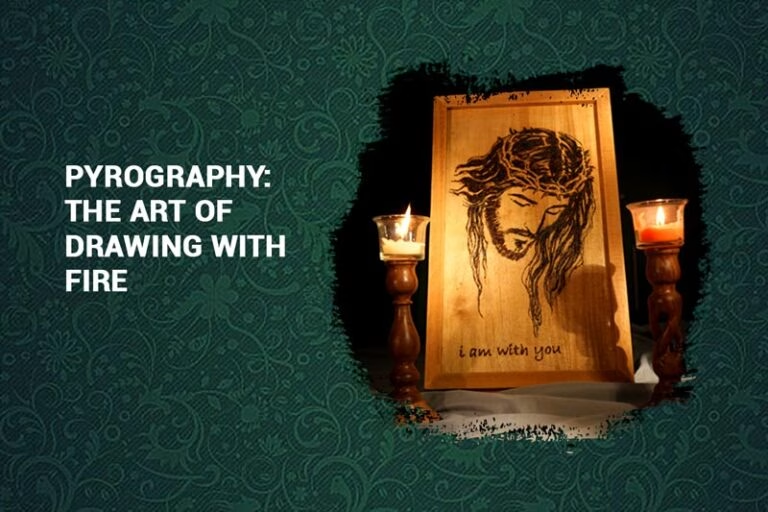Pyrography, stemming from the Greek words “pyr” (fire) and “graphos” (writing), is an ancient craft involving the decoration of wood or other materials through burn marks made with a heated tool. Having its origins rooted in prehistoric times, pyrography has evolved into a versatile and captivating means of artistic expression, offering limitless opportunities for creativity and craftsmanship.
The roots of pyrography extend back to ancient civilizations, where early humans utilized heated tools to adorn wooden objects for both practical and ornamental purposes. As time progressed, pyrography techniques developed, with artisans honing their skills and crafting intricate designs and patterns.
During the Victorian era, pyrography experienced a revival in popularity as a decorative art form. It became common to embellish furniture, household items, and even musical instruments with pyrographic designs, reflecting the aesthetic preferences of the period.
Pyrography entails using a heated tool, typically a metal pen or wire, to create burn marks on the wood’s surface. The intensity and duration of heat determine the depth and darkness of the burn, enabling artists to achieve various shading and detailing effects.
A multitude of techniques, including stippling, shading, and line work, are employed to craft intricate designs and patterns. Artists may opt to use stencils or freehand drawing to outline their compositions before meticulously burning the design onto the wood.
One of pyrography’s most appealing aspects lies in its adaptability to different artistic styles and themes. Artists can create a diverse array of artworks, spanning portraits, landscapes, wildlife, abstract designs, and decorative motifs.
While wood serves as the primary medium for pyrography, artists may also work on alternative surfaces like leather, gourds, paper, and even fabric. Each material presents distinct challenges and opportunities for artistic exploration, enabling artists to push their creative boundaries.
Pyrography artists draw inspiration from a myriad of sources, including nature, mythology, cultural heritage, and personal narratives. The warmth and natural texture of wood lend themselves well to realistic depictions of trees, animals, and landscapes, while abstract designs and patterns showcase the artist’s inventiveness and mastery.
Many pyrography artists infuse their work with elements of storytelling and symbolism, incorporating intricate details and hidden meanings to evoke emotion and curiosity in viewers. Whether exploring themes of spirituality, identity, or the wonders of the natural world, pyrography offers a deeply immersive and enriching artistic journey.

